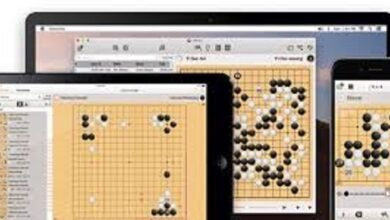Maximizing ROI with Your Business Card: A Strategic Approach

In today’s digitally driven world, the humble business card remains a powerful and cost-effective tool for personal and professional branding. While networking events, emails, and social media have their roles, nothing quite replaces the tactile, lasting impression of a well-designed business card. But how can you ensure your business card isn’t just a formality? How can it deliver real returns on your investment (ROI)? By adopting a strategic approach, your business card can become a valuable marketing asset that enhances your personal brand, fosters meaningful connections, and drives business growth.
1. Design with Purpose
Your business card is more than just a piece of paper with contact details; it’s a reflection of your brand identity. Every design choice, from the color scheme to the fonts, tells a story about who you are and what you represent.
- Brand Consistency: Ensure that your card aligns with your overall branding. If your company logo uses a specific color palette, carry that through to your card. Consistent branding across all materials—business cards, websites, and social media—builds trust and recognition.
- Minimalist vs. Informative: Less is often more when it comes to business cards. Avoid cluttering your card with too much information. Focus on key details like your name, company, job title, and contact information. Consider adding a tagline or a brief value proposition that captures what sets you apart.
- Interactive Features: A growing trend in business card design is incorporating elements like QR codes that direct recipients to a website, portfolio, or social media profiles. This provides an interactive element and makes it easier for prospects to learn more about you without needing to type in URLs manually.
2. Print High-Quality Cards
The quality of your business card says a lot about you and your brand. A flimsy, poorly printed card may signal a lack of professionalism, while a high-quality card demonstrates attention to detail and respect for the recipient. When choosing the right printer and materials, opt for premium cardstock, and explore finishes like matte, gloss, or even textured designs for a memorable tactile experience.
Nowadays, it’s easier than ever to print business cards online, with many platforms offering affordable, customizable options. Some services also allow you to preview your design and get professional templates, ensuring that the final product will reflect the professionalism you aim to project.
3. Target Your Audience
Maximizing the ROI of your business card starts with handing it to the right people. Think of your business card as a targeted marketing tool rather than something to be distributed indiscriminately. Before an event, identify key individuals you want to meet, such as potential clients, partners, or influencers in your industry.
- Tailor Your Approach: Consider creating different business card versions for different purposes. For example, if you work in a creative industry, having a more artistic and bold design for creative prospects could resonate more than a traditional, corporate style.
- Strategic Distribution: Instead of giving your business card to every person you meet, focus on quality interactions. Meaningful conversations are more likely to lead to opportunities than simply handing out cards to large numbers of people.
4. Make It Functional
Why limit your business card to just contact details when it can offer more value to the recipient? By adding functionality, you can make your card more likely to be retained—and referenced.
- Appointment Reminders: You can dedicate space on the back of your card for appointment reminders or special offers.
- Loyalty Programs: Restaurants, salons, and other service-oriented businesses often use business cards as loyalty cards, offering discounts or free services after a certain number of visits.
- Calendar or Metric Reference: In some industries, professionals include useful information such as measurement conversions, a calendar, or essential tips on their cards to ensure they stay in someone’s wallet for longer.
5. Follow Up for Maximum Impact
Don’t let your business card be the end of a conversation. Following up with people who have your card can drastically increase the likelihood of forming a lasting connection. Within 24 to 48 hours of meeting someone, send a personalized email or LinkedIn message, referencing your conversation and attaching any relevant information.
Conclusion: Turning Your Business Card into a Powerful Tool
A business card’s real value lies not in how many people you give it to but in how you use it as a part of your broader marketing and branding strategy. By focusing on design, quality, audience targeting, and added functionality, you can maximize the return on investment from every card. With thoughtful execution, your business card will not only stand out but become a critical asset in growing your professional network and driving future opportunities.





